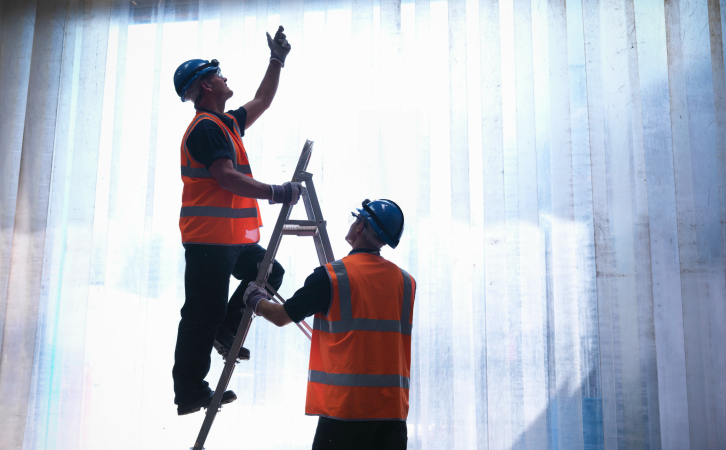We all have our safety idiosyncrasies – safety practices about which we are vigilant and follow to the letter of the law. And then there are other safety concerns we feel comfortable letting slide.
A perfect example of this phenomenon, for me, is my life as a pedestrian. I never cross railroad tracks when the warning signal is flashing – even, as is often the case on my commute, when I can see the train is idling, not moving, 250 yards from the crossing. On the other hand, I am a serial jay walker.
In your own work-life, you probably have co-workers or managers that are borderline militant when it comes to following certain rules, promising hell-fire if you break that particular rule; while they, at the same time, are indifferent to other equally egregious safety violations.
How do people decide which rules are important to follow and which ones aren’t? I think it often comes down to experience. It’s as if we lack the imagination to consider the consequences of some actions until we experience it for ourselves or until someone we know has a close call.
The issue of slips, trips and falls, I must confess, was one of those safety concerns I thought little about until last week when a friend of mine, waiting tables, slipped on a freshly mopped kitchen floor and sliced open her hand after landing on the wine glass she was carrying.
Unfortunately, she had no idea anything had changed in the kitchen that she had been going in and out of all night, and the accident probably could have been prevented by one of the most ubiquitous of safety items, the yellow Caution, Wet Floor sign.
Instead, my friend spent part of Thanksgiving week at the hospital and has lost feeling in two of her fingers (temporarily we hope). The difference between a severed hand and going home safe came down to a handful of seconds. The 20 - 30 seconds it would have taken for the floor cleaner to set up a Wet Floor sign, the less than 3 seconds it took her to crash to the floor, and the fraction of a second it took for the glass to cut through skin, artery, tendon and nerves. Additional surgery looks imminent, as does a financial nightmare for both her family and her employer.
Yet, in the world of injury and illness, she is one of the lucky ones. According to OSHA, slips, trips, and falls are responsible for the majority of workplace accidents and 15% of all accidental deaths. And in most of those cases, similar to the events that led up to my friend’s accident, a few, simple, common-sense steps could have prevented injury or death.
It’s time we started taking action before we become personally acquainted with tragedy and learn from the experience of others. For my own part, I think I’ll start using the crosswalk and leave the jay-walking to those proverbial chickens crossing the road.
If you’d like to help prevent slips, trips and falls in your workplace, consider our online training course, Slips, Trips and Falls for your employees.
Course Coverage
Slips, Trips, and Falls provides training in how to recognize hazards and prevent accidents including the key components of ladder safety. Primary Regs: OSHA 29 CFR 1910 Subpart D, Walking-Working Surfaces; OSHA 29 CFR 1926 Subpart E, Personal Protective and Life Saving Equipment; OSHA 29 CFR 1910 Subpart F, Powered Platforms, Man-lifts, and Vehicle-Mounted Work Platforms; OSHA 29 CFR 1926 Subpart L, Scaffolds; OSHA 29 CFR 1926 Subpart M, Fall Protection; OSHA 29 CFR 1926 Subpart P, Excavations; OSHA 29 CFR 1926 Subpart X, Stairways and Ladders
Training Options
Call 1.888.362.2007, or visit Workplace Safety Training for information about our on-demand training offering, including a list of available courses. If you’re interested in an option that does not require all employees to be present at the same time, you can take a pass on a classroom style format and consider an online solution.







